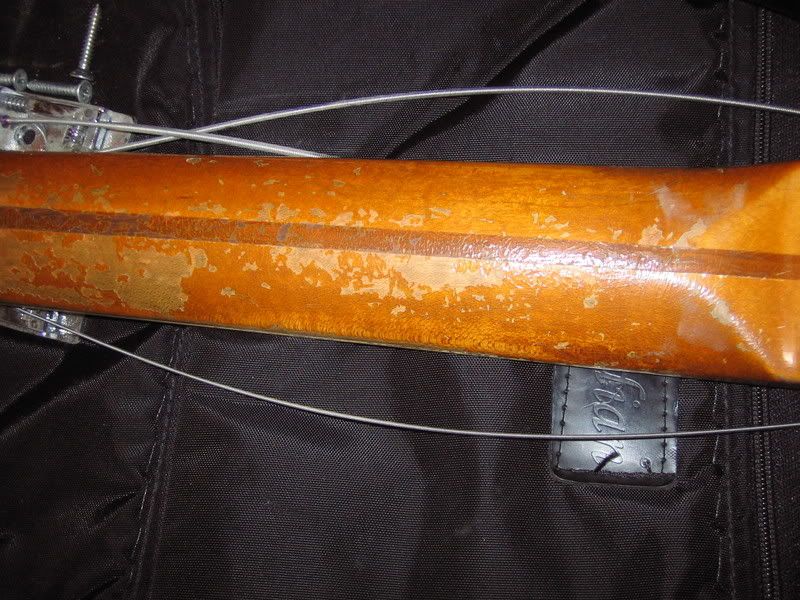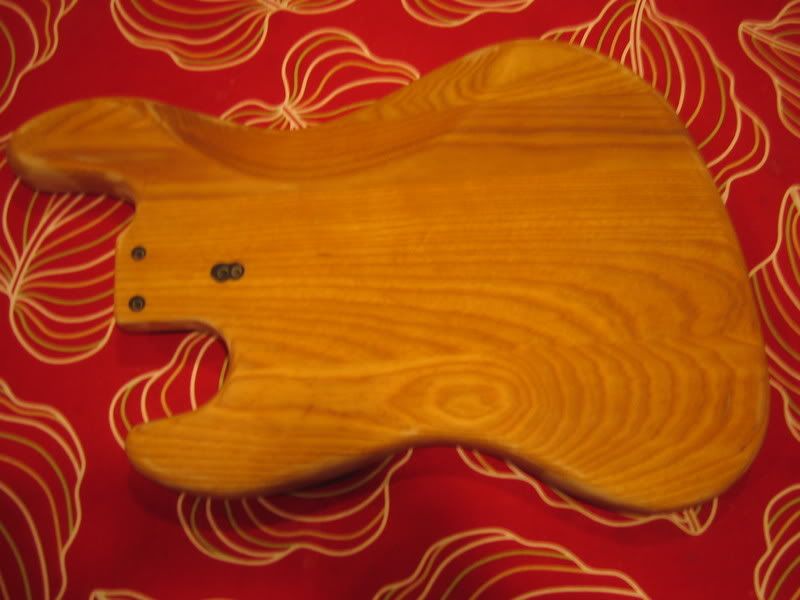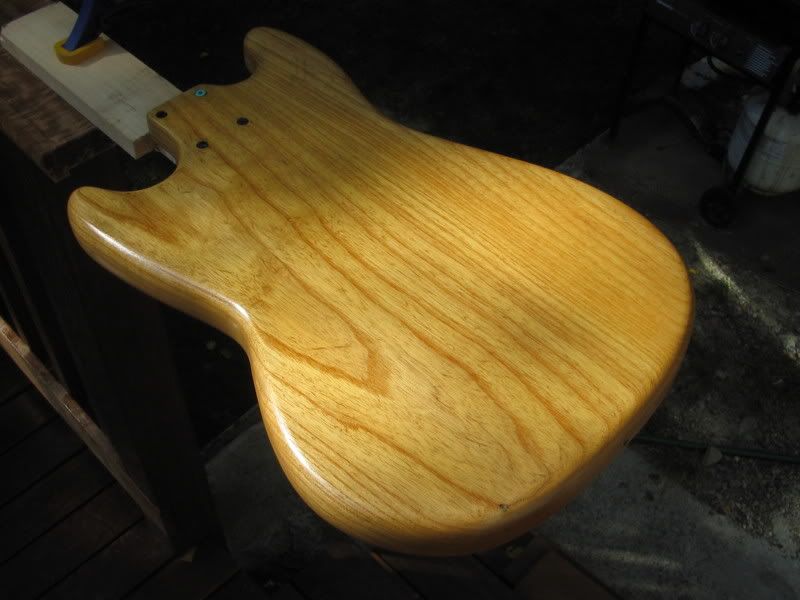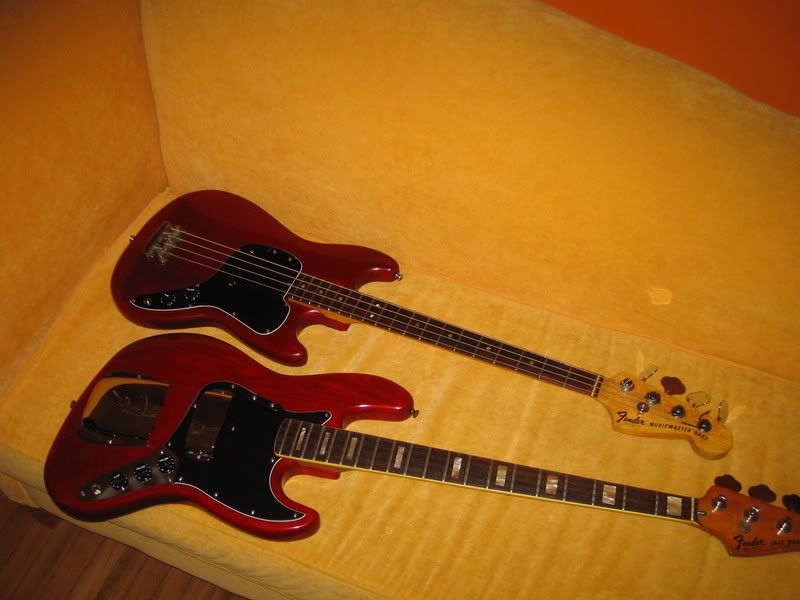I just started a new project on behalf of a customer this past Wednesday - its a 1978 Fender Jazz bass thats been through a lot and had a partial refin over the years. The bass has replacement tuners and bridge (Schaller) and newer control pots, but the pickups are original, as are the frets, string nut, headstock decal, neckplate and control plate. The body finish appears to be original black, but has been oversprayed black to cover chipping and wear in a number of places. The neck was all original, except that it appeared that the back of the neck had been stripped at one point and then shellacked or something with a finish that was now completely flaking off. The headstock may have been oversprayed - though its persistent glossiness may be due to a poly top coat instead of the nitro top coat Fender used in earlier years.


We met and discussed what he'd like to do and decided that the body should be stripped first - and then depending on the condition of the wood, I'd do a refin in natural, transparent red or Olympic white. The tuners will be replaced with Hipshot Vintage tuners, with a detuner on the E-string. The customer wants a BadAss II bridge for the sustain and adjustability. Most likely the bass will get a black pickguard, though a tortoise shell pickguard with yellowed Olympic white would look very cool !!
Unfortunately this Jazz bass is from the era of Fender polyurethane "bowling ball" finishes - as was the Musicmaster in my prior post. I took off some of the finish just at the edge of the body to see what I was going to be dealing with - no fun !!


The good news was that under the black finish was a solid clear sealer coat - which would protect the ash body underneath as I stripped it. Since I realized how tough and thick the finish was, and that paint stripper probably wouldn't attack it - I decided I could use some fairly aggressive methods to remove it. This meant a random orbital sander with a heavy grit/no clog disk, a smaller Craftsman 3-D sander for the back scoop, and a square palm sander with heavy grit (100) paper for getting some of the edge finish off.
My strategy was to use the heaviest grit papers until I started to see the clear coat peeking through, and then switch to finer grits to clean up the clear coat so that I wouldn't leave any deep scratches in the clear coat and certainly wouldn't cut into the wood. Below are my results after a combined total of roughly 2 hours of sanding - the front and back are down to the clear coat and the edges are started.


As you can see, the wood looks great - and there are almost zero flaws/dings that would need to be filled. This body will be an excellent candidate for a clear or other transparent finish.
I estimate it will take me about another 2 hours of work to get the rest of the black finish off, though I am not going to strip out the control cavity, pickup routings or the neck pocket.
(Added on 10/12/07 at 1:11 pm)
Ok, so the black finish is off and the body just requires a little light sanding and few small dings filled before its ready for a clear sealer coat. The existing sealer coat did get sanded through in places along the body edge, but I only hit wood in one area, inside of one of the cutaways. I did wipe the body down with denatured alcohol, and while it was still wet the grain of the wood looked excellent. The forecast is for some dryer Fall weather this weekend, so I anticipate clear coating it over the next day or two.


(Update Oct. 25th 6:30 PM)
Finally got a few things out of the way and the humidity dropped - and I sprayed the Jazz body with a transparent red color coat. I did this with a little lighter touch than the Musicmaster - as I really wanted the figured wood to show through. Once this is dry, it will get multiple clear coats and then a wet sanding and buffing out - I think its going to look outstanding!!


Parts just came in the mail - so this bass will be going together soon !!
(Update Nov.2, 2007)
Finally wet sanded and buffed out the body. I'm still waiting for the knobs and a new control plate, but I bolted the parts together and snapped a few pictures. A transformed bass. I refinished the back of the neck too in an aged amber nitro - not quite the proper slick-o-rama 70s poly finish - more like a nice worn in 60's neck.


















1 comments: